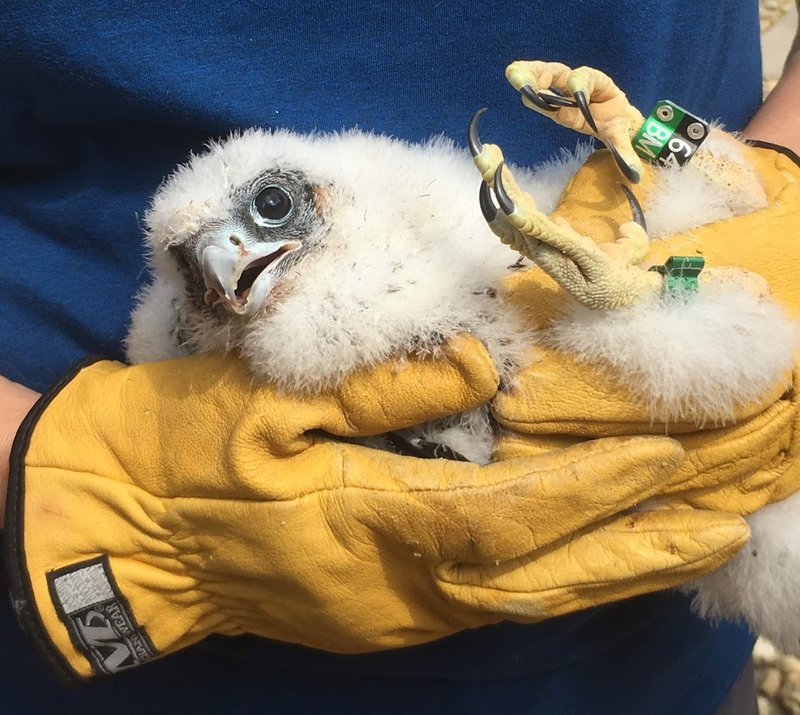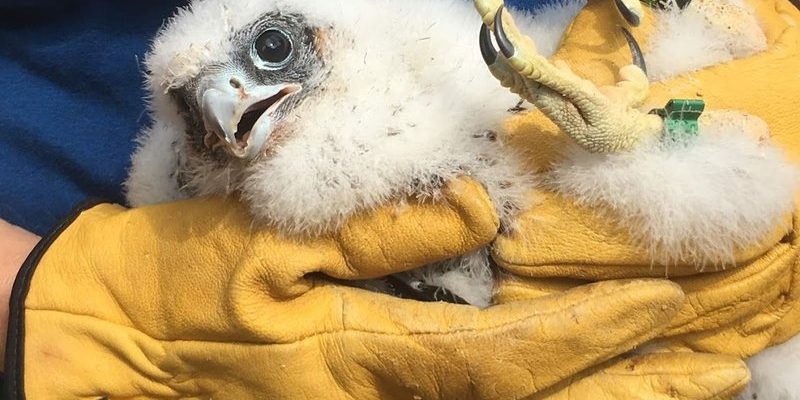
In this article, we’ll dive into the various strategies being implemented to protect these incredible creatures. It’s a tale of hope, teamwork, and the commitment to keeping our skies filled with the swift grace of falcons. So, grab your coffee, and let’s explore how conservationists, environmentalists, and everyday people are banding together to ensure the survival of the Peregrine Falcon.
A Brief History of the Peregrine Falcon
The Peregrine Falcon is a bird of prey known for its striking blue-gray feathers and pale underbelly. Found nearly all over the world, from urban cities to remote cliffs, these birds are fascinating hunters. But their story hasn’t always been a happy one. In the mid-20th century, their population faced a drastic decline due to the use of DDT, a powerful insecticide. This chemical caused eggshell thinning, leading to fewer chicks surviving to adulthood.
During that period, the Peregrine Falcon was listed as endangered in the United States. The situation was dire, and the future of these incredible birds hung in the balance. However, the story took a positive turn as dedicated individuals began working together to save them. They recognized that the Peregrine Falcon is not just a beautiful bird; it plays a vital role in the ecosystem. If we want a healthy environment, we need a thriving population of these skilled hunters.
Understanding the Causes of Decline
To truly appreciate the conservation efforts aimed at protecting the Peregrine Falcon, it’s essential to understand what caused their decline. Besides pesticides like DDT, habitat loss was another significant factor. Urban development and deforestation destroyed their nesting sites and hunting grounds. Imagine trying to find a home in a bustling city where tall buildings replace the cliffs and trees you once called home. That’s exactly what happened to many Peregrine Falcons.
Additionally, pollution and climate change have further impacted their survival rates. For instance, changes in temperature and weather patterns can disrupt nesting seasons and affect food availability. When the environment gets out of balance, it’s not just the falcons that suffer; it’s a ripple effect that can harm many species. Addressing these root causes has become a key focus for those seeking to protect them.
Key Conservation Strategies
So, what does it take to bring the Peregrine Falcon back from the brink? Various strategies have been put in place, and they’re quite effective. One of the cornerstone efforts is breeding programs. Conservationists breed falcons in captivity and then release them into the wild, helping to boost their population numbers. This method has been successfully used in many regions, often resulting in a healthy flock returning to their former habitats.
Another vital conservation strategy involves habitat restoration. By preserving nesting sites and enhancing habitats, we can create spaces where Peregrine Falcons can thrive. This might mean rehabilitating old buildings that provide perfect nesting spots or planting trees to improve their hunting grounds. When these birds have safe places to nest and ample food sources, their chances of survival dramatically increase.
Community Engagement and Education
Conservation isn’t just about scientists and researchers; it often involves the community as well. Educating people about the importance of protecting the Peregrine Falcon and their habitats can lead to positive change. Local workshops, school programs, and outreach events play a crucial role in raising awareness. When people know more about these magnificent birds, they’re more likely to care and take action.
Additionally, many conservation organizations encourage citizen science initiatives, where members of the community can participate in monitoring falcon populations or creating awareness campaigns. Imagine spotting a Peregrine Falcon in your neighborhood and reporting your findings. It’s a way to connect with nature and contribute to a larger goal of conservation. When communities unite, their collective efforts can make a significant difference for these birds.
Successful Recovery Stories
It’s heartwarming to see the success stories that have emerged from conservation efforts. Once classified as endangered, the Peregrine Falcon has made a steady recovery. In fact, they’ve been removed from the endangered list in several regions! These victories demonstrate what can happen when dedicated individuals and organizations come together to protect wildlife.
For example, in New York City, Peregrine Falcons have adapted remarkably well to urban life. Their nesting sites are often found on tall skyscrapers, utilizing the high vantage points to hunt for pigeons and other birds. This urban adaptation has not only helped increase their numbers but has also become a source of pride for locals who enjoy watching these birds soar through the skyline.
The Role of Technology in Conservation
Technology has played a huge role in the ongoing conservation efforts for the Peregrine Falcon. From satellite tracking to camera monitoring, new tools allow researchers to observe and understand their behaviors like never before. For instance, tracking devices can help scientists find out where these birds hunt and how far they travel, leading to better protection strategies.
Additionally, online platforms and social media have become vital for sharing information and engaging the public. Conservation organizations can post updates on breeding programs or successful releases, encouraging people to get involved. By leveraging technology, conservationists can reach a broader audience and inspire action, whether it’s through donations or volunteering.
How You Can Help
Feeling inspired? There are plenty of ways you can contribute to the conservation of the Peregrine Falcon. First and foremost, consider supporting local conservation organizations that focus on protecting birds of prey. Your donations can fund important research, breeding programs, and habitat restoration efforts.
Another impactful way to help is through activism. Advocating for stronger regulations on pesticides and habitat protection can lead to significant changes in policies that directly affect falcons and other wildlife. Whether it’s contacting your local representatives or participating in conservation events, every voice matters.
Finally, simply spreading awareness by sharing information about the Peregrine Falcon with friends, family, or on social media can create a ripple effect. The more people know about the importance of these birds, the greater the support for efforts aimed at protecting them.
In conclusion, the story of the Peregrine Falcon is one of resilience and hope. Through combined efforts in breeding, habitat restoration, community engagement, and the use of technology, we can ensure that these magnificent birds continue to grace our skies. It’s a reminder that when we come together for a purpose, we can change the course of nature and protect the beauty that surrounds us. So, let’s keep our eyes on the skies and do our part to protect the Peregrine Falcon!

